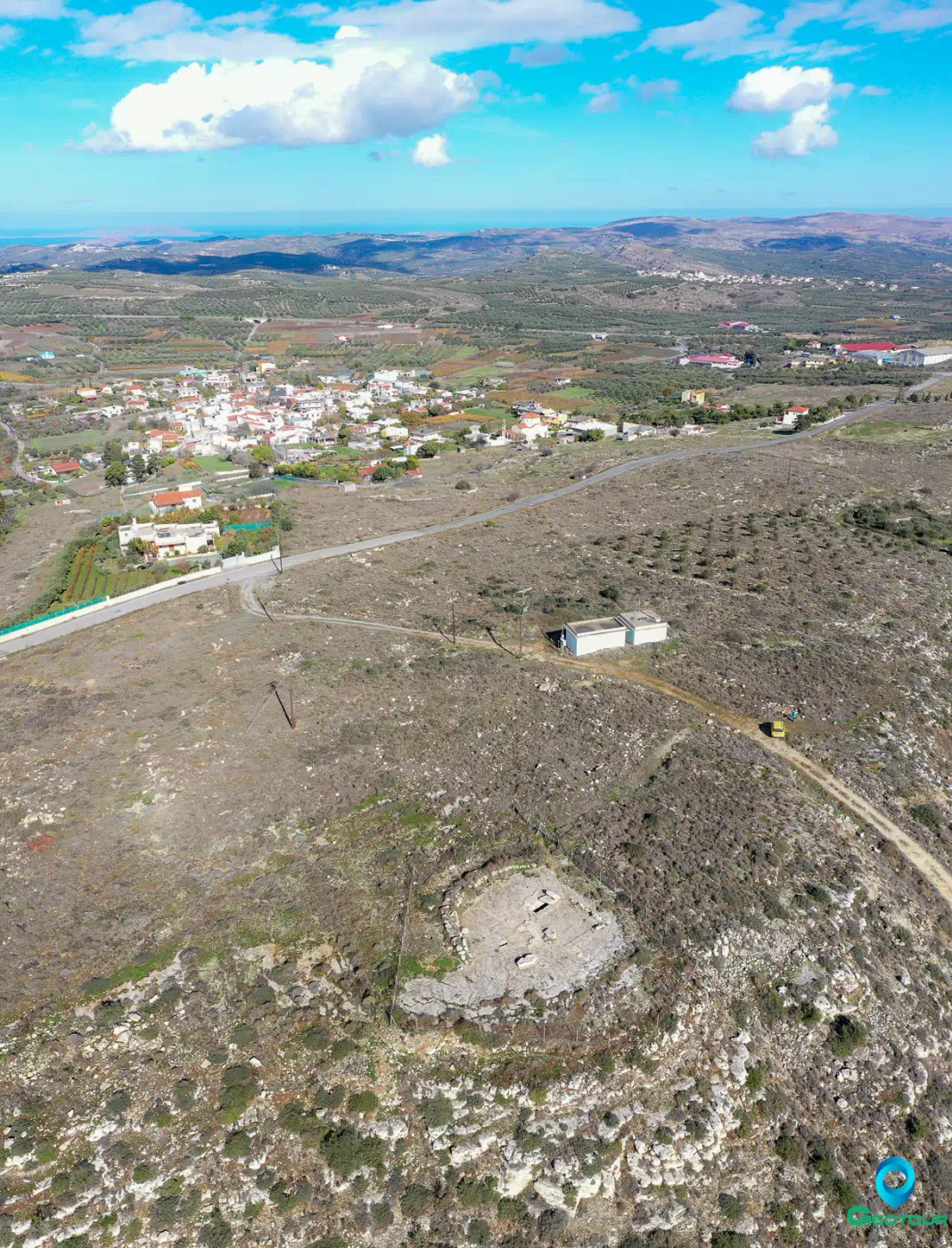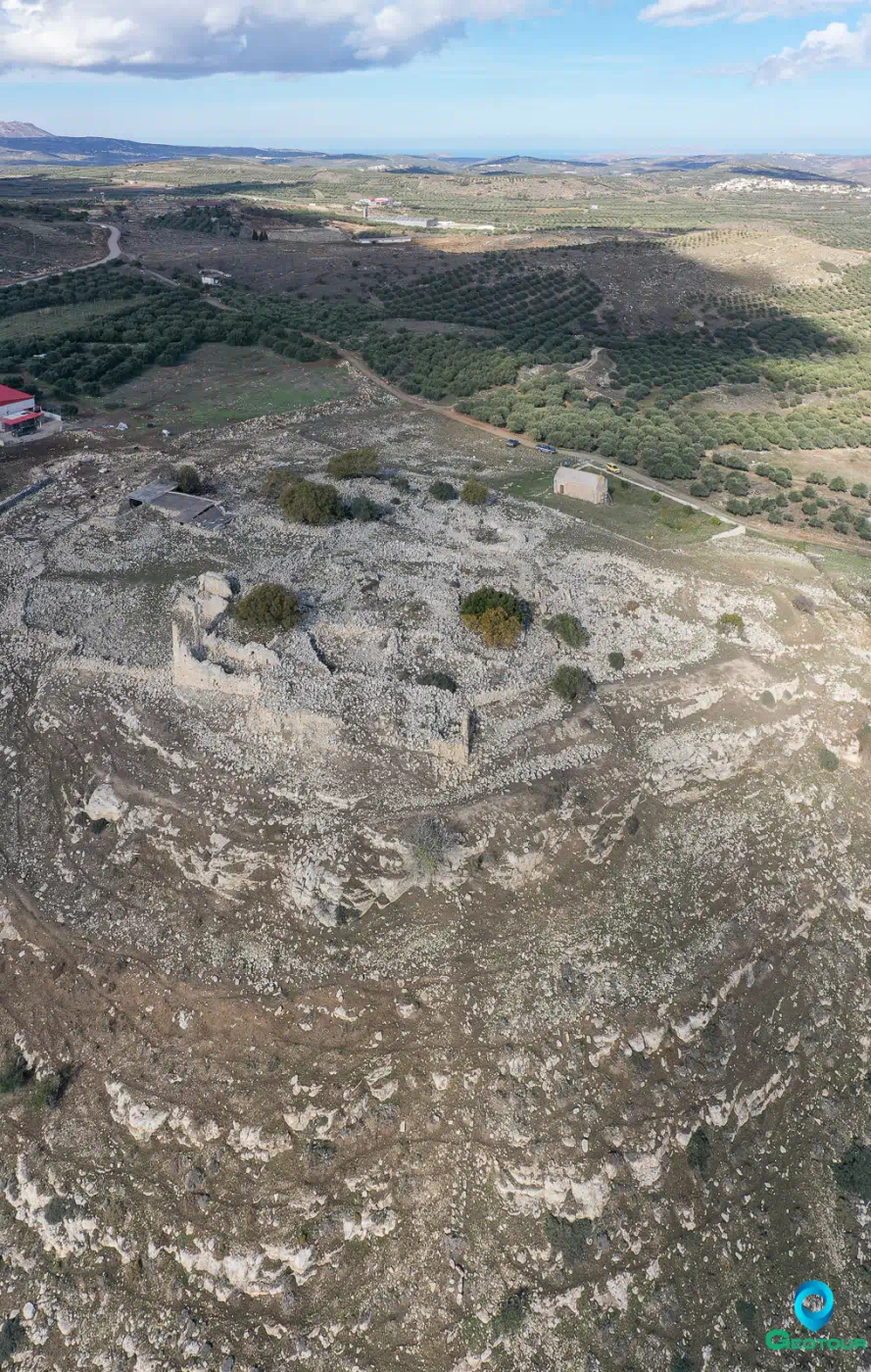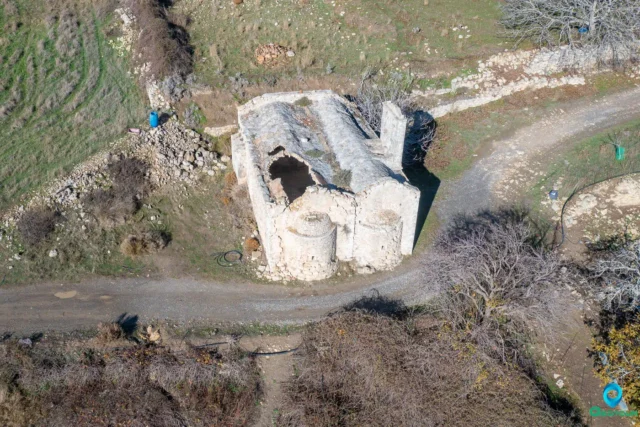

Alagni (Αλάγνιον) is a village 25 kilometers from Heraklion, on the road to Arkalochori, in the Municipality of Archanes-Asterousia, Crete.
Etymology and History
The village’s name is believed to be derived from the nymph Alagonia, daughter of Zeus and Europa, whose temple was situated on the Tholi hill. The ruins of the temple are reportedly still visible to some extent.
Alagni has a long history evidenced by the discovery of a Minoan farmhouse within the village. The village is mentioned in historical records as early as 1583 by Kastrofilakas. In 1630, it appears in Vasilikata records, and the Turkish census of 1671 lists it as “Alagni” with 52 taxable households. The Egyptian census records it as having 6 Christian and 7 Turkish families.
Landmarks and Culture
Churches
Alagni has several notable churches:
-
Agios Vlassis: The patron saint of the village, this church features significant frescoes.
-
Sotira: Another church with noteworthy frescoes.
-
Agios Georgios (Saint George): Also adorned with frescoes.
-
Panagia: Located on the south side of the village, this church holds historical and religious significance.
-
Panagia of Rouma: Situated in the deserted settlement of Rouma, this church is where various old sacred utensils were discovered during restoration work.
-
Agioi Apostoloi (Holy Apostles): A two-aisled church at the foot of Tholi hill, built in the 15th-16th century and bearing the emblem of the Venetian Cornaro family. The church also houses two arcosolia (arched tombs), one inside and one outside with an inscription dated AXID (1614).



Rouma
East of Alagni lies the area of Rouma, once rich in oaks and pine trees. It was completely deserted due to a plague, with the survivors relocating to Alagni.
Koursamos
The largest cluster of winepresses is found in the deserted area of Koursamos. Four arched-roof winepresses with vessels dating back to the 16th-17th centuries have been discovered there.
Tholi Fortress
A small fortress from the late Venetian period, Tholi Fortress, is located on a hilltop west of Alagni, offering panoramic views. It was built around the 16th-17th century.
Archaeological Findings
Alagni is located near the Minoan palace of Galatas, which was built during the Middle Minoan IIIA period (around 1700-1600 BC). The palace is one of the earliest examples of Minoan palatial architecture, and it is thought to have been an important center of power and administration. The proximity of Alagni to Galatas suggests that the village may have been an important settlement during the Minoan period.
Economy
The fertile lands around Alagni have always been central to the livelihood of its residents. They specialize in the cultivation of grapes and olives, with a substantial production of wine and oil. This is evidenced by the numerous olive mills and wineries in the wider area.
Settlement: Key Points
-
Location: 25 kilometers from Heraklion, on the road to Arkalochori, in the Municipality of Archanes-Asterousia, Crete.
-
Historical Significance: Evidence of Minoan settlement, mentioned in Venetian and Turkish records.
-
Population:
| Year | Population | Notes |
|---|---|---|
| 1583 | 162 | |
| 1671 | 52 | Taxable households |
| 1834 | 6 Christian families, 7 Turkish families | |
| 1900 | 208 | Christians |
| 1961 | 280 | |
| 1971 | 269 | |
| 1981 | 245 | |
| 1991 | 254 | |
| 2001 | 315 | |
| 2011 | 180 | Census |
| 2021 | 166 | Census |
- Current Status: An active village with a focus on agriculture, particularly wine and olive oil production.
References
-
Buell, D. Matthew. “The Rise of a Minoan City and the (Re)Structuring of its Hinterlands: A View from Galatas.” In Making Ancient Cities: Space and Place in Early Urban Societies, edited by Andrew T. Creekmore III and Kevin D. Fisher, 257-291. Cambridge: Cambridge University Press, 2014.
-
Buell, D. Matthew. “Minoan Cityscapes: Urban Planning in Neopalatial Crete.” In Minoan Archaeology: Perspectives for the 21st Century, edited by Sarah Cappel, Ute Günkel-Maschek, and Diamantis Panagiotopoulos, 77-91. Louvain-la-Neuve: UCL Presses Universitaires de Louvain, 2015.
Access
Alagni is 5.8 kilometers away from Arkalochori and 4.0 kilometers away from Agies Paraskies


































There are no comments yet.